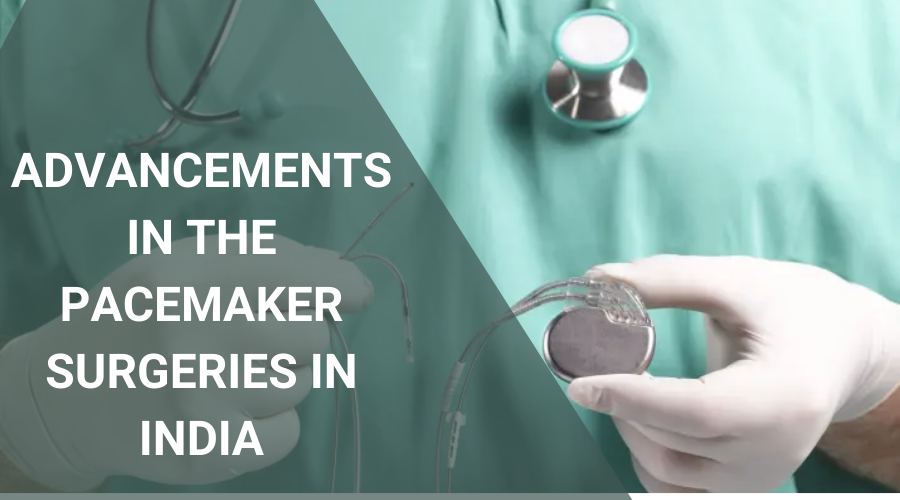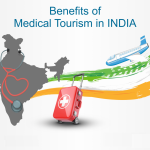Introduction:
According to statistics, more than 20,000 pacemakers are implanted in India each year, with the number continuing to rise. Heart Pacemaker surgery has become a routine treatment for patients with cardiac disorders. In the last few decades, there has been a steep upswing in pacemaker implantation due to the availability of newer technology and widening of the indication for pacemaker implantation.
Since the invention of pacemakers, several advanced pacemaker technologies have led to numerous improvements making the pacemaker more effective and accurate. Improved battery life, MRI-safe pacemakers, wireless pacemakers, and thorough data collecting from the pacemaker are just a few of the latest improvements. Pacemaker allows the heart to function on its own and intervenes only when required to normalize the irregular heart rhythm.
There has been a consistent rise in patients’ awareness about the implanted cardiac device and its impact on their quality of life. Healthcare professionals play a vital role in providing sufficient information to the patients before and after the pacemaker implantation. It is crucial since any mistake or omission of information can jeopardize patients’ daily activities. Healthcare professionals related to cardiac surgery treatments and hospitals in India take utmost care and ensure to provide adequate and appropriate information to the patients about pacemakers to help them recuperate well and experience a good quality of life.
What is Pacemaker Surgery?
Before we go any further, let us define what a pacemaker is. Well, a pacemaker is a medium for transferring small electrical pulses to the heart muscle in order to keep the heart rate normal; or to stimulate the ventricles or lower chambers of the heart. The need for a pacemaker arises when problems with the heart’s electrical conduction system occur. A pacemaker implant may be required if the timing of the heart’s electrical stimulation to its muscle and the subsequent response of the chamber of the heart is altered.
The need for a pacemaker procedure arises when the patient has Sick sinus syndrome, Cardiac block or arrest, atrial fibrillation, irregular heartbeat, or Bradycardia or slow heartbeat.
The cost of pacemaker implantation in India depends on various aspects such as the incision location, the technology used, the type of incision, and the patient’s overall health. To give you an idea, the cost of the surgery ranges from INR 50,000 to INR 2 Lakhs, depending on the case.
Pacemaker surgery is available at several Cardiac Hospitals in India. Most of them are accredited by NABH and JCI – this reflects the provision of the highest quality of healthcare to the patients. These hospitals have cutting-edge infrastructure that provides patients with high-quality care in a peaceful atmosphere. Pacemaker surgery patients benefit from experienced and well-trained healthcare professionals and cutting-edge medical technology.
Advance Pacemaker Technologies
1. MRI-Safe Pacemakers
One of the most significant trends in pacemaker technology in recent years has been the introduction of MRI-compatible pacemaker models. These allow patients to undergo an MR scan without damaging the device or altering its settings. The earlier version of pacemakers without MRI compatibility prevented patients from undergoing an MRI.
According to one study, over a million people require an MRI scan. 20% of patients with pacemakers required an MRI Scan in the initial two years of their implantation. Generally, patients with pacemakers have multiple oncologic, orthopedic, cardiovascular, and neurologic co-morbidities that are understood well with the help of an MRI. Thus while implanting pacemakers that allow MRI scans, follow an MRI-safe pacemaker protocol.
During an MRI scan, the pacemaker, in conjunction with the MRI activator handheld device, initiates pre-programmed settings personalized for the patients using advanced MRI technologies. This technology eliminates the inconvenience for the patient and the time and effort associated with traditional pre- and post-scan pacemaker reprogramming.
The Small wireless long-lasting pacemaker that enables patients to undergo an MRI scan is a vital step forward.
2. Micra Transcatheter Pacing System (TPS)
The Micra Transcatheter Pacing System approved by the FDA is the world’s smallest pacemaker. The size of Micra is equivalent to that of a vitamin. It is a single-chamber pacemaker with no leads placed directly into the heart. It necessitates a process that is as little invasive as possible. The pacemaker is implanted through a catheter in the leg rather than a chest incision in this treatment. Apart from the cosmetic aspect, it also helps to reduce infections.
The benefits of the Micra Transcatheter pacing system are several such as below:
- It is smaller in size compared to conventional pacemakers.
- Patients with Micra implantation can safely undergo MRI scans. It automatically adjusts the heart rate by sensing the changes in the body.
- The battery life is 12 years.
- It is less invasive and placed in the heart through a vein in the leg.
- Enclosed within the heart.
- It removes any issues that could occur due to a chest incision or the wires of a typical pacemaker.
Delaying Atrial Fibrillation with Antitachycardia Pacing
Several studies have shown that the reactive ATP – Antitachycardia algorithm works. Pacing can significantly slow the progression of persistent AF or atrial fibrillation in bradycardia patients. According to the study, ATP pacing lowers the development of AF by 58 percent when compared to typical conventional pacemakers.
It restores the heart’s normal rhythm by pacing unusually fast atrial beats. It slows down the disease by terminating atrial tachycardia progression. Patients who were benefited from the advanced packing displayed a 52% reduction in hospitalizations and emergency room visits related to AF. The reduction of such costly procedures also allows patients to save a significant amount of money.
Cardiac Resynchronization Therapy (CRT) Pacemaker
In India, Cardiac Resynchronization Therapy (CRT) Pacemaker Surgery is well-known for its low cost, advanced medical facilities, and compassionate healthcare professionals. This condition is known as heart failure. It occurs when the ventricles do not beat at the same time.
In this treatment, minor surgery is performed in which the pacemaker is implanted beneath the skin. The wires of the instrument are connected on both sides of the ventricles. The CRT device sends electrical signals to the ventricles, causing them to pump simultaneously. Biventricular pacing is the name given to this type of electrical stimulation.
Cardiac Resynchronization Therapy is used in 7 out of 10 heart failure cases. This therapy is not recommended for all cases of heart failure. This therapy is helpful for those patients who have had mild to moderate heart failure. It boosts their heart function, survival, and overall quality of life. The doctor may recommend CRT treatment if the patient has moderate to severe heart symptoms. If the heart is enlarged or weak if the ventricles do not work well, etc.
Cardiac Resynchronization Therapy (CRT) Pacemaker Surgery in India is well-known for its low cost, advanced medical facilities, and compassionate healthcare professionals.
Mediflam – Cardiac Treatment in India
Medical tourism in India is rising in leaps and bounds. The quantum of medical tourists in India increases with each passing year.
They seek the best hospitals in India for high-quality, low-cost pacemaker implantation. A majority of multi-specialty and cardiac specialty hospitals in India have advanced and state-of-the-art equipment and a dedicated team of cardiac healthcare professionals.
Cardiac treatments in India are carried out with utmost care and expertise. Medical tourists can avail most coveted and best procedures in India. Cardiac bypass surgery, robotic heart surgery, aortic valve replacement, advanced pacemaker insertion surgery, and other procedures are some of the most common treatments.
MediFlam works closely with some of the prominent pacemaker implantation hospitals in India. All these hospitals have highly trained electrophysiologists. They have a lot of experience performing complex cardiac surgeries. MediFlam is renowned for providing A to Z assistance to medical tourists to have a successful pacemaker surgery in India.
FAQ Regarding Pacemaker Surgery in India
1. Is pacemaker implantation a type of open-heart surgery?
The implantation of a pacemaker does not necessitate open-heart surgery. Most patients are fit enough to go home within 24 hours. Generally, this procedure is executed using local anesthesia.
2. How long does the pacemaker surgery take?
The duration of the pacemaker surgery is generally around one to two hours. If the patient is undergoing any other heart surgery, the procedure may take longer.
3. In India, how much does a pacemaker cost?
The cost of a pacemaker in India ranges from INR One Lakh to Nine Lakhs. These pacemakers have batteries that last for around 8 to 10 years. The pacemaker implantation cost depends on the hospital, type and quality of pacemaker, surgeon, and many other parameters.
4. Who is benefitted from a pacemaker?
Pacemakers are used for those patients whose rhythm and heart rate are changed. Pacemakers treat slow heart rhythms that are caused by a defect in the heart’s conduction system. They are also used to cure unexplained fainting spells, hypertrophic cardiomyopathy, and heart failure.
5. Which is the best cardiac hospital in India?
There are several best cardiac hospitals in India. These hospitals are at par with other developed nations. Apollo Hospitals; Medanta – The Medicity; Wockhardt Hospitals; Fortis Escort Heart Institute; Max Healthcare Hospitals, and many more.








